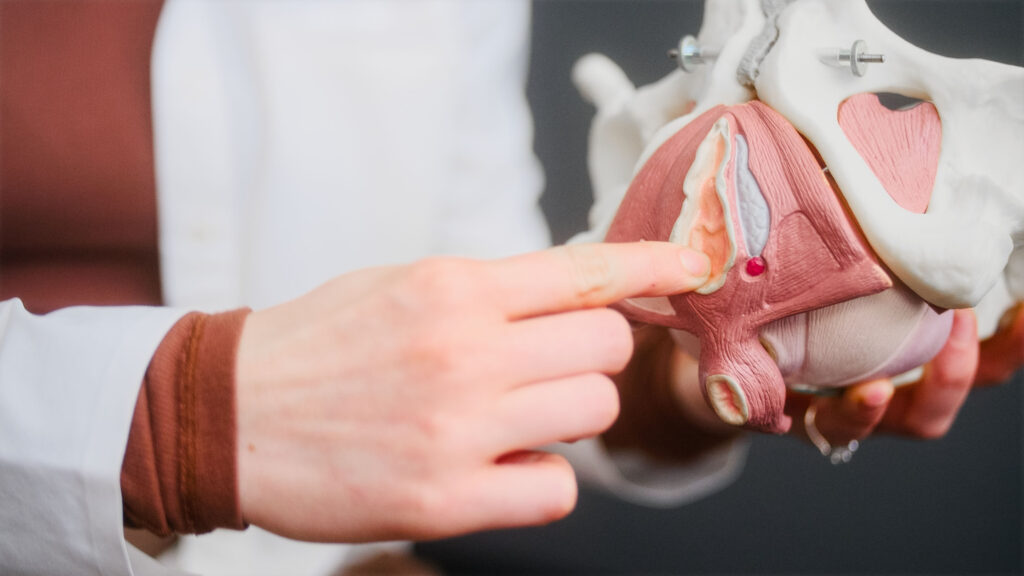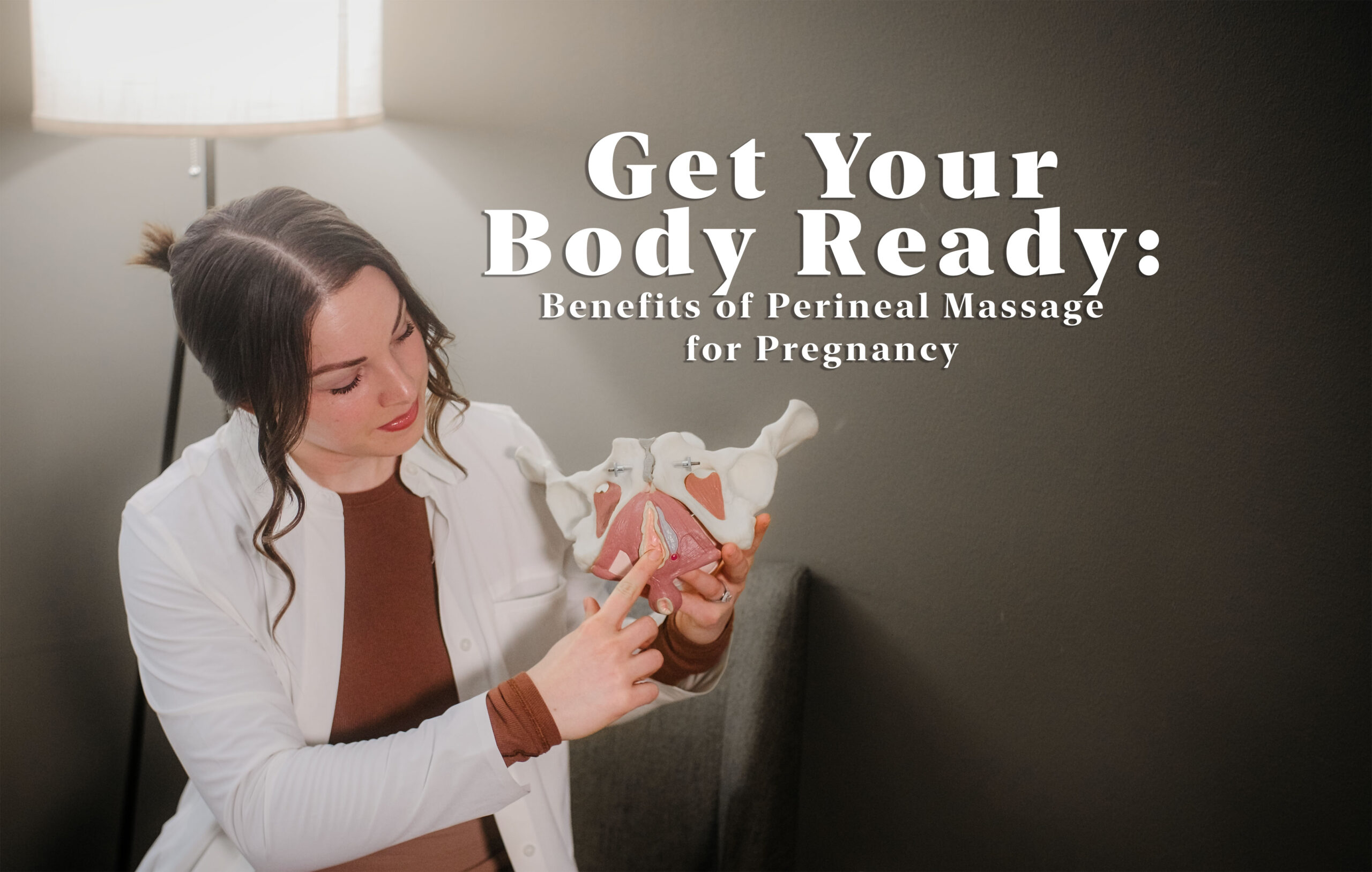Perineal massage performed during pregnancy is associated with a lower risk of severe perineal trauma during a vaginal delivery as well as postpartum complications.
Pregnancy is an exciting and transformative time, but it can also come with its fair share of discomforts and worries. For many expectant mothers, one of the most pressing concerns is the process of childbirth itself. While there are many different methods and techniques that can be used to prepare for and manage labor, perineal massage is one approach that has gained increasing attention and popularity in recent years.

What is Perineal Massage?
Perineal massage involves gently stretching and massaging the perineum, the area of skin and muscle between the vagina and the anus. By doing so, it is thought to help increase the flexibility and elasticity of the tissues in this area, potentially reducing the risk of tearing or needing an episiotomy during childbirth. While the practice can feel a bit daunting or uncomfortable at first, many women report that it can be an empowering and helpful tool for navigating the challenges of labor and delivery.
Why is Perineal Massage Important?
Perineal massage has been shown to reduce the risk of tearing and pain during delivery. It can even help minimize the risk of postpartum symptoms and assist with healing and scar tissue after birth!
How Does Perineal Massage Help?
What Are the Benefits of Perineal Massage?
Perineal massage can reduce the risk of tearing.
One of the biggest benefits of perineal massage is that it can reduce the risk of vaginal tearing during childbirth. Tearing is a common occurrence during vaginal delivery, and it can be quite painful and take a while to heal. By massaging the perineum regularly, you can improve the flexibility and decrease sensitivity of the tissues in the area, which can make it easier for them to stretch during delivery.
Perineal massage can reduce the need for an episiotomy.
An episiotomy is a surgical incision made in the perineum to widen the vaginal opening during delivery. Although it is a somewhat common procedure, it can be associated with complications, such as pain, infection, and difficulty healing. By doing perineal massage, you can reduce the need for an episiotomy by making the tissues more pliable and less likely to tear.
Perineal massage can improve sexual function after delivery.
After childbirth, many women experience changes in their sexual function, such as decreased sensation, pain, or discomfort. Perineal massage can help improve sexual function by increasing blood flow to the area and reducing scar tissue sensitivity. This can make intercourse more comfortable and pleasurable for both partners.
Perineal massage can reduce pain and discomfort during pregnancy.
During pregnancy, women may experience pain and discomfort in the pelvic area, including the perineum. Perineal massage can help alleviate these symptoms by increasing blood flow to the area and releasing tension in the muscles. This can make pregnancy more comfortable and enjoyable.
Perineal massage can improve sexual function after delivery.
Childbirth can be a daunting experience, especially for first-time mothers. By familiarizing yourself with the sensations of the perineum and becoming more comfortable with the stretching and pressure that may occur during delivery, you can feel more in control of the process and more confident in your ability to deliver your baby.

When Do I Start Perineal Massage?
Perineal massage can be done by the pregnant woman herself or with the help of a partner, and it is typically started at around 34 weeks of pregnancy. The massage can be performed manually or with the help of a tool, such as a vaginal dilator or pelvic wand.
Perineal massage is generally considered safe for most pregnant people and can be a helpful technique to prepare the perineal area for childbirth. However, there are some situations where perineal massage should not be performed, such as:
- You have an active infection or inflammation in the perineal or vaginal area.
- You are experiencing any unusual vaginal discharge, bleeding, or pain.
- You have an incompetent or insufficient cervix.
- You are experiencing preterm labor or have a history of preterm labor.
- You were placed on pelvic rest by your physician.
It is important to talk to your healthcare provider before starting perineal massage to make sure it is safe for you to do so. They can provide guidance on the best technique to use and the appropriate time to start the massage during pregnancy.
How Do I Perform Perineal Massage?
Choose a comfortable position: You can do perineal massage in a variety of positions, such as sitting on a chair, on the toilet, or lying down. Choose a position that is comfortable for you and allows you to access the perineum easily.
Use a lubricant: It is important to use a lubricant, such as coconut oil or vitamin E oil, to prevent friction and make the massage more comfortable.
Use your clean thumbs or index fingers to gently press down and apart on the sides of the vaginal opening. You should feel a slight burning or stretching sensation, but it should not be painful.
- Think about the vaginal opening like the face of a clock. 6 o’clock is straight down towards your anus. You’ll want to stretch in the direction of 3 and 9 o’clock as this is the area of the perineum that will have the greatest amount of stretch and pressure during delivery.
Start with gentle pressure: Use light pressure and gradually increase the pressure over time as the tissues become more pliable. You want to avoid any bruising or irritation.
Try this once a day or every other day, starting at around 34 weeks of pregnancy. Perform the massage for up to 5 minutes. But don’t put too much pressure on yourself. Even performing for 1 minute is a great start!
There are lots of great tutorials and visuals available on how to perform perineal massage. Check out this video for more instructions or make an appointment with Dr. Kari at Restore to get personalized advice.
Kari Hough, PT, DPT • Pelvic Health Specialist

